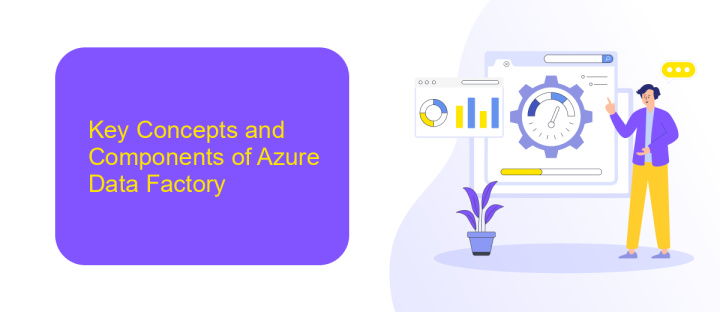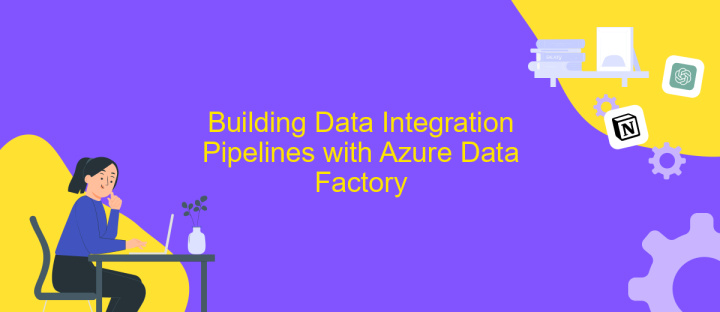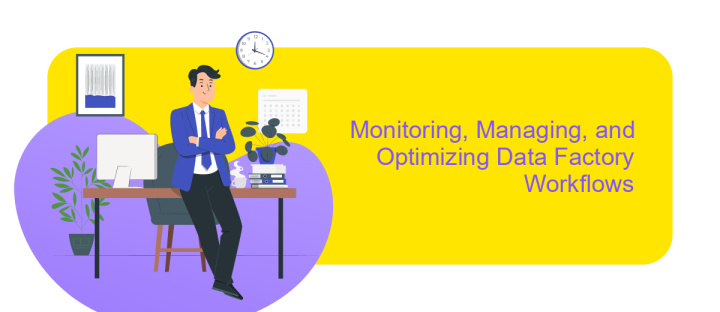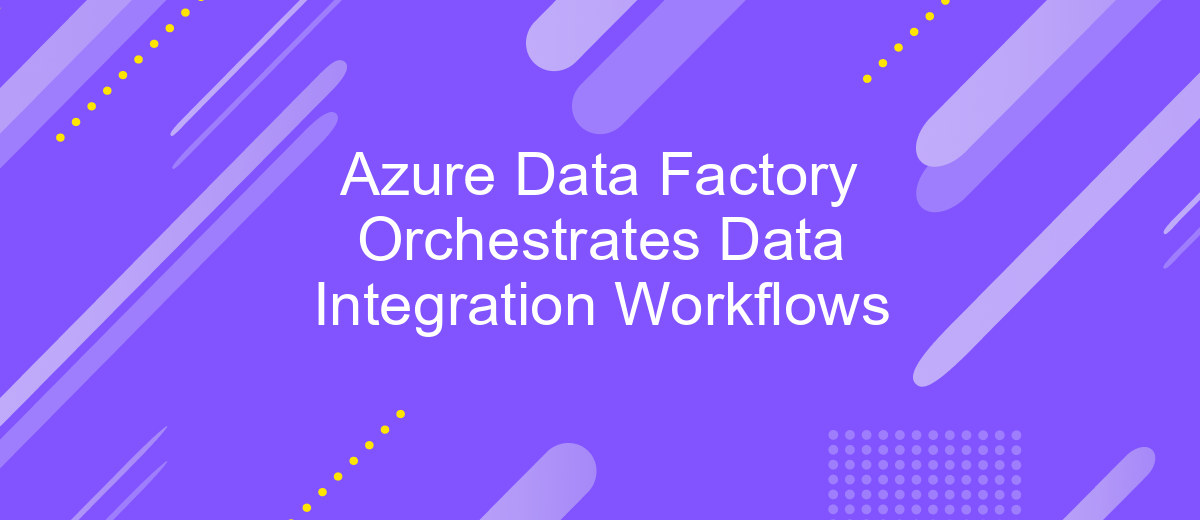Azure Data Factory Orchestrates Data Integration Workflows
Azure Data Factory (ADF) serves as a powerful cloud-based data integration service that orchestrates data workflows seamlessly. By enabling organizations to efficiently ingest, prepare, and transform data from diverse sources, ADF simplifies complex data processes. With its intuitive interface and robust capabilities, businesses can streamline their data pipelines, ensuring timely and accurate data delivery for analytics and decision-making, ultimately driving operational excellence and innovation.
Introduction to Azure Data Factory and its Role in Data Orchestration
Azure Data Factory (ADF) is a cloud-based data integration service that allows organizations to create, schedule, and orchestrate data workflows. As businesses increasingly rely on diverse data sources, the need for seamless data integration becomes paramount. ADF addresses this by providing a platform that can connect to a wide array of data stores, transform data at scale, and ensure reliable data movement across different environments.
- Scalable data movement: ADF efficiently transfers data between various sources and destinations, ensuring high performance and reliability.
- Rich transformation capabilities: With built-in data transformation features, ADF enables complex data processing and cleansing.
- Extensive connectivity: ADF supports a wide range of data sources, including on-premises and cloud-based systems.
- Flexible scheduling and monitoring: Users can easily schedule data workflows and monitor their execution through intuitive dashboards.
In the realm of data orchestration, Azure Data Factory plays a crucial role by providing a comprehensive solution for managing data workflows. It empowers organizations to automate data movement and transformation, ensuring that data is readily available for analysis and decision-making. With its robust features and seamless integration capabilities, ADF is an essential tool for modern data-driven enterprises.
Key Concepts and Components of Azure Data Factory

Azure Data Factory is a cloud-based data integration service that enables the creation, scheduling, and orchestration of data workflows. It provides a scalable and reliable framework for building data-driven workflows for orchestrating data movement and transforming data at scale. Key components include pipelines, which are logical groupings of activities that perform a unit of work; datasets, which represent data structures within the data stores; and linked services, which define the connection information needed for Data Factory to connect to external resources.
Activities within a pipeline can be data movement activities, data transformation activities, or control activities. Triggers allow for the scheduling and execution of pipelines. Azure Data Factory also supports integration with other services, such as Azure Machine Learning, Azure Synapse Analytics, and ApiX-Drive, which can be used to streamline data integration processes by automating the connection and synchronization between different applications and services. This integration capability enhances the flexibility and efficiency of data workflows, making it easier to manage complex data integration scenarios.
Building Data Integration Pipelines with Azure Data Factory

Azure Data Factory (ADF) is a robust cloud-based data integration service that enables users to create, schedule, and orchestrate data workflows. It simplifies the process of building data integration pipelines by providing a user-friendly interface and a wide range of connectors for various data sources. With ADF, users can efficiently manage and transform data across on-premises and cloud environments, ensuring seamless data flow and integration.
- Define the data sources and destinations: Identify the data sources you need to integrate and the target destinations where the data should be delivered.
- Create linked services: Establish connections to your data sources and destinations by configuring linked services in ADF.
- Design data pipelines: Use the ADF visual interface to design data pipelines that define the flow of data from sources to destinations, including any necessary transformations.
- Set up triggers: Schedule your data pipelines to run automatically by setting up triggers based on specific events or time intervals.
- Monitor and manage: Use ADF's monitoring tools to track the performance and status of your data pipelines, making adjustments as needed.
By leveraging Azure Data Factory, organizations can streamline their data integration processes, ensuring timely and accurate data delivery. ADF's scalability and flexibility make it an ideal choice for businesses looking to enhance their data management strategies and drive actionable insights from their data assets.
Monitoring, Managing, and Optimizing Data Factory Workflows

Monitoring Azure Data Factory workflows is crucial for ensuring seamless data integration processes. By utilizing Azure's monitoring tools, users can track pipeline performance, identify bottlenecks, and detect errors in real-time. This proactive approach allows for immediate intervention, minimizing downtime and maintaining data flow efficiency.
Managing workflows involves configuring triggers, setting up alerts, and automating tasks to optimize resource usage. Azure Data Factory provides a user-friendly interface for managing these elements, enabling teams to focus on strategic goals rather than operational challenges. With effective management, organizations can ensure that data pipelines are reliable and scalable.
- Set up alerts for pipeline failures to enable quick responses.
- Utilize Azure Monitor for detailed insights into workflow performance.
- Implement automated scaling to handle varying data loads efficiently.
- Regularly review and update pipeline configurations to align with business needs.
Optimizing Data Factory workflows requires continuous evaluation and improvement. By leveraging Azure's analytics and reporting capabilities, teams can gain valuable insights into pipeline performance, enabling them to make data-driven decisions. Regular optimization not only enhances efficiency but also reduces costs, ensuring that data integration efforts align with organizational objectives.


Real-world Use Cases and Best Practices for Azure Data Factory
Azure Data Factory (ADF) is a versatile tool that enables seamless data integration across various platforms. In real-world scenarios, ADF is often used to consolidate data from disparate sources such as on-premises databases, cloud storage, and SaaS applications, transforming it into actionable insights. For instance, businesses can orchestrate complex ETL (Extract, Transform, Load) workflows to ensure data consistency and accuracy across their operations. By leveraging ADF's capabilities, organizations can automate data movement, reduce manual intervention, and improve decision-making processes.
To maximize the efficiency of ADF, best practices include designing modular pipelines, implementing error handling, and monitoring performance metrics. Utilizing services like ApiX-Drive can further enhance data integration by providing seamless connectivity between ADF and various applications, simplifying data workflows. Additionally, ensuring data security through encryption and access control is crucial. Regularly updating and testing pipelines helps maintain system reliability. By following these practices, businesses can harness the full potential of Azure Data Factory, driving innovation and achieving strategic goals.
FAQ
What is Azure Data Factory and how does it work for data integration?
How can I automate data workflows in Azure Data Factory?
What are the key components of Azure Data Factory?
How can I integrate Azure Data Factory with other applications or services?
What are some best practices for managing data workflows in Azure Data Factory?
Apix-Drive is a simple and efficient system connector that will help you automate routine tasks and optimize business processes. You can save time and money, direct these resources to more important purposes. Test ApiX-Drive and make sure that this tool will relieve your employees and after 5 minutes of settings your business will start working faster.

